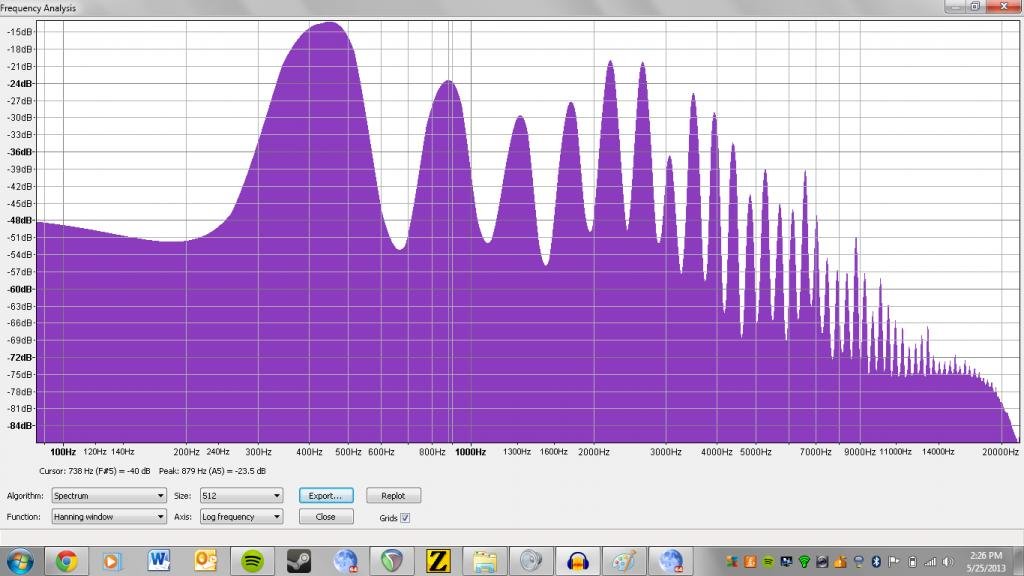It’s the time of year for saving money!
In this installment about do-it-yourself acoustics, we’ll learn about two of the most misunderstood aspects of small room acoustics: flutter echo, and bass resonance.
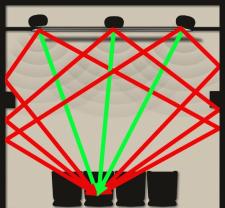 Flutter echo is the sound made when you clap your hands and hear a springy sound in a room. Find a place in your house where you have two parallel walls with nothing on them. Clap your hands and you will hear the sound. It sounds, literally, like a spring or zinging sound. When a speaker is positioned where it creates a flutter echo, it can be unpleasant every time a snare drum is hit. Fortunately, it’s an easy thing to fix. Simply place something to break up the straight forward and side to side waves from the speaker. This is important: the only place you need to be concerned about flutter echo is directly from your speakers. It’s a mistake to walk around a room clapping, or sit at the listening position and clap. From these places, you will hear flutter echoes. Unless you’re walking around the room clapping, or clapping while sitting in your chair listening to music, those flutter echoes will not be a nuisance.
Flutter echo is the sound made when you clap your hands and hear a springy sound in a room. Find a place in your house where you have two parallel walls with nothing on them. Clap your hands and you will hear the sound. It sounds, literally, like a spring or zinging sound. When a speaker is positioned where it creates a flutter echo, it can be unpleasant every time a snare drum is hit. Fortunately, it’s an easy thing to fix. Simply place something to break up the straight forward and side to side waves from the speaker. This is important: the only place you need to be concerned about flutter echo is directly from your speakers. It’s a mistake to walk around a room clapping, or sit at the listening position and clap. From these places, you will hear flutter echoes. Unless you’re walking around the room clapping, or clapping while sitting in your chair listening to music, those flutter echoes will not be a nuisance.
To tame a flutter echo, place sound absorption or diffusive materials, e.g. tapestries, rugs, fiberglass panels, foam, in the six spots that create flutter echo (Figure 1). In the drawing, you can see small panels to the sides of the speakers and slightly larger panels on the front wall (the wall behind the speakers) and diffusive material, such as book shelves, on the rear wall behind the listener. This will kill the majority of the flutter echo that causes problems if your room is typical.
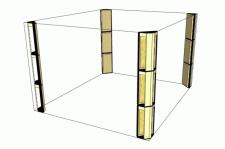 Bass is a whole different monster, and I do mean monster. Tight, well-balanced bass sound is the most challenging aspect in the world of acoustics, in part because of the general complexity of bass. Too much bass can mask the rest of the harmonic spectrum. Bass “trapping” is an entire subject all to itself, so in this installment we’ll discuss ways of trying to improve bass without using actual bass traps. In article 4, we’ll delve into actual bass trapping.
Bass is a whole different monster, and I do mean monster. Tight, well-balanced bass sound is the most challenging aspect in the world of acoustics, in part because of the general complexity of bass. Too much bass can mask the rest of the harmonic spectrum. Bass “trapping” is an entire subject all to itself, so in this installment we’ll discuss ways of trying to improve bass without using actual bass traps. In article 4, we’ll delve into actual bass trapping.
Venting the bass is one of the easiest ways to help reduce bass buildup in any room. If your room is small, you can just open a door or large window, allowing the built-up bass to vent away from the room. There are, however, two potential problems with this method. The sound will escape into other rooms of the house and/or to the outdoors, which may bother others in the vicinity. You may also hear unwanted sound coming into the room. Only if you live by yourself in a quiet cabin in the woods, is this the ideal method.
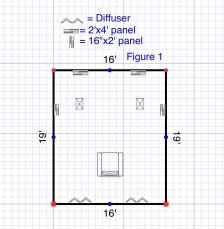 As we discussed in article 1, properly placing speakers is always the first place to begin. By reducing resonance exacerbated by boundary reflections, you have a best-case scenario to mitigate the large bass peaks and valleys. What I’m referring to by “peaks” is one or a few notes in the bass that sounds much louder than all the others, or a note or notes that are very low or nonexistent, referred to as “valleys”. When we perform room tests and get a readout of the sound pressure level in the low frequencies, usually under 250Hz, the test looks like actual peaks and valleys. When the peaks and valleys in these tests appear very pronounced, we need to adjust the acoustics. This is a great example of why it’s a bad practice to place speakers in corners or too close to a wall. When speakers are properly placed, you will see the peaks and valleys are smoother.
As we discussed in article 1, properly placing speakers is always the first place to begin. By reducing resonance exacerbated by boundary reflections, you have a best-case scenario to mitigate the large bass peaks and valleys. What I’m referring to by “peaks” is one or a few notes in the bass that sounds much louder than all the others, or a note or notes that are very low or nonexistent, referred to as “valleys”. When we perform room tests and get a readout of the sound pressure level in the low frequencies, usually under 250Hz, the test looks like actual peaks and valleys. When the peaks and valleys in these tests appear very pronounced, we need to adjust the acoustics. This is a great example of why it’s a bad practice to place speakers in corners or too close to a wall. When speakers are properly placed, you will see the peaks and valleys are smoother.
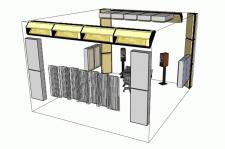 There are eight problem areas in a rectangular shaped room: the four corners at the floor, and the four corners at the ceiling. These are referred to as the tri-corners and this is where the most bass buildup occurs. Until your speakers are suitably placed, these 8 spots can wreak havoc on your acoustic system. The ideal way to treat the remainder of bass issues after speaker placement has been properly established is to attack these tri-corners is by using some sort of bass trap. If that is not possible, you can sometimes achieve optimal results by adding large, soft chairs, love seats, pillows to the lower areas, or even large empty boxes stuffed with newspapers to the higher spaces. That last one works quite well, even if it’s not the best decorative choice.
There are eight problem areas in a rectangular shaped room: the four corners at the floor, and the four corners at the ceiling. These are referred to as the tri-corners and this is where the most bass buildup occurs. Until your speakers are suitably placed, these 8 spots can wreak havoc on your acoustic system. The ideal way to treat the remainder of bass issues after speaker placement has been properly established is to attack these tri-corners is by using some sort of bass trap. If that is not possible, you can sometimes achieve optimal results by adding large, soft chairs, love seats, pillows to the lower areas, or even large empty boxes stuffed with newspapers to the higher spaces. That last one works quite well, even if it’s not the best decorative choice.
The next installment will be dedicated entirely to bass trapping and types of products available.
Christopher Klein has been designing and building high end acoustic treatments for listening rooms, studios, and home theatres since 1992. He has also been a professional musician since 1977.
